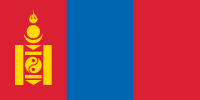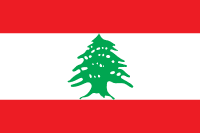 Nepal Insurance – World Insurance Companies Logos. Click on the insurers logos to get a lot of up-to-date information for each insurer in NEPAL. We would like to help you find the best coverage online.
Nepal Insurance – World Insurance Companies Logos. Click on the insurers logos to get a lot of up-to-date information for each insurer in NEPAL. We would like to help you find the best coverage online.
Insurance Company Logos in Nepal
List of Insurance logo and names in Nepal. The graphic mark of a company is synonymous with its brand. A logo is immediately recognizable and allows the customer to associate the enterprise with the useful qualities such as trust, the right price, and many other vital issues about finding the best insurance. Find the best coverage costs, coverage and claim support. Select the insurer you have confidence in.
- All
BACKGROUND
Beema Samiti, is the Regulatory Authority of Nepal, The line ministry of the Finance Ministry. The word ‘Beema’ means ‘Insurance’ and ‘Samiti’ connotes ‘Board’.
Hence, the Word ‘Beema Samiti’ is synonymous to Insurance Board, which is constituted to systematize, regularize, develop and regulate the insurance business within the country under Act, 1992. This Samiti (Board) looks, after all, the insurance-related activities in the State of Nepal. As a regulatory body, the Board’s main concern is to create a professional, healthy and developed insurance market in Nepal.
Furthermore, after the restoration of democracy in 1990 AD, insurance, environment began to change simultaneously along with other factors. Thus to meet the requirements of the changing situation, Act, 1968 was repelled by new Ins. Act, 1992 (Beema Ain, 2049). The preamble of the Act clearly states the purpose of the Act, thus “to establish an Insurance Board to systematize, regularize, develop and regulate the insurance business”. To achieve the goal of the preamble, Beema Samiti, is formed as an autonomous body the Ins. Act of 1992.
- From Beema Samiti (Insurance Board)
FUNCTION, DUTIES AND POWER
In order to systematize, regularize, develop and regulate the insurance business in the Kingdom, the following functions, duties and powers are conferred on Beema Samiti:
Provide suggestions to Nepal Govt. to formulate necessary policy for systematizing, regularizing, developing and regulating the insurance business,
Set out guidelines for insurers to invest their fund and prescribe the priority sectors for such investment,
Register and renew the Insurer, Insurance Agent, Surveyor or Broker and to cancel or cause to cancel such registration,
Arbitrate in the disputes, which arises between the insurer and insured,
Make decision on the complaints filed by the insurer regarding the settlement of liability of the insurance,
Issue necessary directives to the insurer from time to time regarding insurance business,
Formulate necessary basis fo the protection of interest of the insured, and
Do, or caused to do, other necessary functions regarding insurance business.
- From Beema Samiti
REINSURANCE DIRECTIVE FOR LIFE INSURANCE
Insurance Board has issued the following Reinsurance Directive for Life Insurance – 2065 for the purpose of Sub-Rule (2) of Rule 6 of Insurance Regulation, 1993 by making reinsurance policy and provision pursuant to the authority given by section 28 of Ins. Act,1992 to manage the provision of reinsurance of all Insurers.
1. Brief Name and Commencement
(1) The name of this directive shall be Reinsurance Directive for Life Insurance – 2065.
(2) This directive shall commence from the date set by the Board.
2. Reinsurance Provision
(1) The insurer has to make appropriate reinsurance policy according to its underwriting policy, net worth and its risk.
(2) Under the reinsurance policy made per Sub-directive (1), following points have to be included.
(a) Type of reinsurance,
(b) Basis of selection of reinsurer (including leader),
(c) Basis of selection of reinsurance broker,
(d) Internal control system to monitor the reinsurance arrangements,
(e) Insurer’s retention limit under each reinsurance,
(f) Maximum reinsurance limit under each reinsurance, and
(g) Other necessary information.
(3) (a) Insurer’s Board of Directors or the official authorized by Board of Directors has to prepare reinsurance policy as per Sub-directive (2) for each fiscal year and submit to the Insurance Board, at least, thirty (30) days before the end of each fiscal year.
(b) The Insurance Board should be notified about any reinsurance arrangement that took place separately during the mid of the period.
In the case of the insurer not having its head office in Nepal, this office will have to prepare its reinsurance policy and submit to the Board as per this directive.
(4) The insurer has to submit to the Insurance Board the attested copy of Signed Slip/Cover Note of Reinsurance Treaty done for each fiscal year within forty-five (45) days after treaty becomes effective. However, this provision will not be applicable for facultative reinsurance.
(5) Irrespective of anything written anywhere in this directive, the Insurer has to amend its reinsurance provisions as necessary upon immediate review of the same in the case of the amendment in underwriting policy, the financial condition of the Insurer getting worse/adverse, the rating of the Reinsurer going down or other necessary condition.
(6) The Insurance Board can give necessary instruction on the reinsurance policy submitted as per Sub-directive (3) and reinsurance treaty submitted as per Sub-directive (4).
(7) Reinsurance policy or treaty has to be amended per instruction of the Insurance Board as per Sub-directive (6).
3. Risk retention by the insurer Insurer cannot reinsure 100% of risk without retaining some portion of risk covered by each policy of the insurer.
4. Need for reinsurance
(1) The insurer has to reinsure the remaining portion of risk after retaining the risk of its own.
(2) Policy cannot be issued without adequate reinsurance arrangements of the portion, which cannot be retained as per
Sub-directive (1).
(3) Necessary process for renewal of reinsurance treaty has to be started thirty (30) days prior to the expiry of reinsurance arrangement under Treaty done as per Sub-directive (1).
(4) While reinsuring as per Sub-directive (1), reinsurance arrangement should be made in a manner that any risk covered by the policy of the insurer is not skipped.
(5) While reinsuring as per Sub-directive (1), reinsurance has to be done with local insurer registered with the Board, Reinsurance Company registered in Nepal or Reinsurance Company registered overseas.
(6) While doing reinsurance with reinsurance company registered overseas as per Sub-directive (5), Reinsurer should be selected considering the Reinsurer’s capital, goodwill, capacity and experience as well.
But, reinsurance for a leader cannot be done with reinsurance company having credit rating less than BBB under the rating of Credit Rating Agency recognized to rate the Insurer/Reinsurer internationally.
(7) While submitting copy of reinsurance treaty pursuant to Subdirectory (4) of Directive 2, proof of Reinsurer’s rating has to be enclosed.
(8) In the case of a decrease in a rating of the Reinsurer as per Subdirectory (6), reinsurance arrangement with such Reinsurer should not be renewed.
(9) Risk cannot be covered without confirmation of Reinsurer in case facultative reinsurance is required. Such Reinsurer should be selected considering the Reinsurer’s capital, goodwill, capacity and experience as well.
(10)The insurer is not having its Head Office in Nepal is not allowed to do a transaction with its Head Office as Reinsurer.
5. Insurer’s retention
(1) Insurer’s top retention per life under the policy issued by the insurer doing life insurance business should not be more than 0.1% of its net worth in Nepal.
(2) Maximum retention per life can be up to Rs.300,000 in the case of an insurer having its main office in overseas.
Note: It would be appropriate to downgrade its retention according to the nature of risk while the Insurer determines retention. The insurer can determine any one risk on its own.
6. Catastrophe Reinsurance requirement:
(1) Adequate Catastrophe Reinsurance has to be done for the risk under the policy issued by the Insurer.
(2) The maximum retention limit under Catastrophe Reinsurance Treaty can be up to Rs.20, 000,000 (20 million).
(3) Appropriate and sufficient Catastrophe Reinsurance should be done for the sum of Net Liability retained by the insurer per directive-4, sub-directive 1 & 2 and Probable Maximum Loss on the insurance coverage inside a geographical region having the highest number of insurance coverage under the policy issued by an insurer.
Clarification: For the purpose of this directive, geographical region indicates Kathmandu valley and sub-metropolitan cities outside the Kathmandu valley.
(4) In case where it is not possible to segregate insurance coverage issued in a geographical region per Sub-directive (3), the Catastrophic Reinsurance should be based on the sum of Ne
Liability retained by the Insurer as per Directive 4, and the Probable Maximum Loss.
7. Provision regarding selection of reinsurance broker
(1) Insurer can do reinsurance directly or through reinsurance
broker.
(2) In the case of reinsuring through reinsurance broker, selection has to be done considering the broker’s capital, goodwill, capacity and experience.
(3) While doing reinsurance through reinsurance broker, proof of
Professional Indemnity Policy done through such broker has to be acquired.
(4) Reinsurance broker as per Sub-directive (2) should be at least BBB rating from Credit Rating Agency as per Sub-directive (6) of Directive 4.
Take a look at more insurance company logos in Asian Insurance.



 Myanmar Insurance – World Insurance Companies Logos. Click on the insurers logos to get a lot of up-to-date information from every insurer in MYANMAR. We would like to help you find the best coverage online.
Myanmar Insurance – World Insurance Companies Logos. Click on the insurers logos to get a lot of up-to-date information from every insurer in MYANMAR. We would like to help you find the best coverage online. 

 Mongolia Insurance – World Insurance Companies Logos. Click on the insurers logos to get a bunch of up-to-date information from every insurer in MONGOLIA. We wish to help you find the best coverage through the Internet.
Mongolia Insurance – World Insurance Companies Logos. Click on the insurers logos to get a bunch of up-to-date information from every insurer in MONGOLIA. We wish to help you find the best coverage through the Internet. 

 Maldives Insurance – World Insurance Companies Logos. Click on the insurers logos for a bunch of up-to-date information available to every MALDIVES insurer. We would like to help you find the best coverage online.
Maldives Insurance – World Insurance Companies Logos. Click on the insurers logos for a bunch of up-to-date information available to every MALDIVES insurer. We would like to help you find the best coverage online. 


 Lebanon Insurance – World Insurance Companies Logos. The pages of this website contain a wealth of vital information about all types of coverage issues in LEBANON. By clicking the symbol of insurers can immediately access this updated information.
Lebanon Insurance – World Insurance Companies Logos. The pages of this website contain a wealth of vital information about all types of coverage issues in LEBANON. By clicking the symbol of insurers can immediately access this updated information.

 Laos Insurance – World Insurance Companies Logos. Click on the insurers logos to get a lot of up-to-date information offering to every LAOS insurer. Our goal is to help you find the best coverage online.
Laos Insurance – World Insurance Companies Logos. Click on the insurers logos to get a lot of up-to-date information offering to every LAOS insurer. Our goal is to help you find the best coverage online. 
 Kyrgyzstan Insurance – World Insurance Companies Logos. Click on the insurance company logos to get a bunch of up-to-date information from every insurer in Kyrgyzstan. We would like to help you find the best insurance online.
Kyrgyzstan Insurance – World Insurance Companies Logos. Click on the insurance company logos to get a bunch of up-to-date information from every insurer in Kyrgyzstan. We would like to help you find the best insurance online. 
